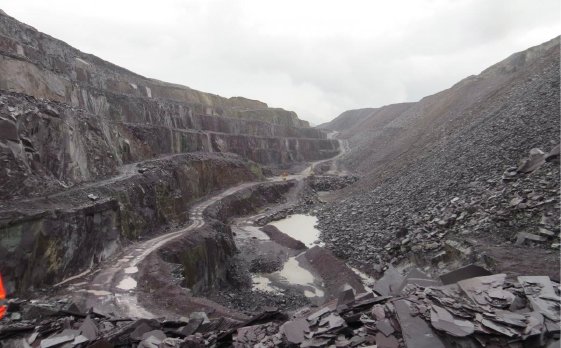Welsh Slate : World Heritage
Next up for Welsh Slate is consideration as a World Heritage Site, because it is this year's application from the UK to UNESCO's World Heritage Committee. The UK can put forward only one proposal a year for World Heritage Site status. It comes from the UK government. This year's proposal covers the Slate Landscape of north-west Wales. The idea to make Welsh Slate a World Heritage Site goes back many years. You can read more about the proposal here.
The Slate Landscape area proposed as a World Heritage Site runs throughout the county of Gwynedd. It was assessed for World Heritage Status by a UK panel of experts last year and will now be formally presented to UNESCO. It will first be considered by the International Council of Sites & Monuments, followed by the World Heritage Committee in 2021.
The main features of the Slate Landscape are:
1. Penrhyn Slate Quarry and Bethesda, and the Ogwen Valley to Port Penrhyn
2. Dinorwig Slate Quarry Mountain Landscape
3. Nantlle Valley Slate Quarry Landscape
4. Gorseddau and Prince of Wales Slate Quarries, Railways and Mill
5. Ffestiniog: its Slate Mines and Quarries, ‘city of slates’ and railway to Porthmadog
6. Bryneglwys Slate Quarry, Abergynolwyn village and the Talyllyn Railway
7. Aberllefenni Slate Quarry
If it is successful, the Slate Landscape will be the fourth UNESCO World Heritage Site in Wales, sitting alongside the Blaenavon Industrial Landscape, the Castles & Town Walls of King Edward at Gwynedd and the Pontcysyllte Aqueduct.
Michael Ellis MP, Minister for Arts, Heritage & Tourism, said during a Parliamentary reception for the Slate Landscape on 23 October: “Gwynedd’s slate landscape is hugely important. Its vast quarries and mines have not only shaped the countryside of the region but also countless buildings across the UK and the world.”
UK Government Minister for Wales, Mims Davies, said at the event: “It gives me great pleasure to see that the world-renowned slate landscape of Gwynedd has been selected as the UK Government’s preferred UNESCO World Heritage Site nomination. An accolade such as this not only highlights the immense beauty and history that Wales has to offer but also acts as a catalyst to investment and tourism. The status, which is globally recognised, would help to revive and grow the economy of the slate areas that have had such a significant influence on the communities and heritage of North-West Wales.”

